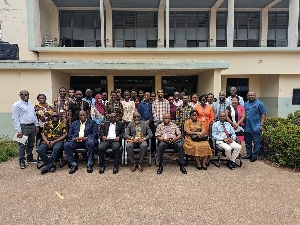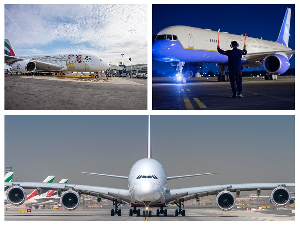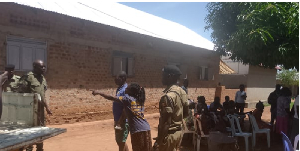Regional News of Monday, 15 April 2024
Source: Ghana Atomic Energy Commission
Clinical training in Diagnostic Radiology underway in Accra
A six-month clinical training to enhance diagnostic radiology skills for medical physicists from Tanzania, Uganda, Sudan, and Namibia has commenced in Accra.
Dubbed the “Technical Cooperation Group Fellowship on Clinical Training for Medical Physicists in Diagnostic Radiology,” it provides fellows with specialized training in the medical application of radiation physics to evaluate practices that involve medical exposure and optimize the physical aspects of diagnostic and therapeutic procedures in terms of benefits and risks.
It also forms part of efforts by the International Atomic Energy Agency (IAEA) to address the shortfall of clinically qualified medical physicists with specialties in Africa.
The program is being hosted by the Medical Radiation Physics Center of the Radiological Medical Sciences Research Institute (RAMSRI) at the GAEC for the third time since 2019 under the auspices of the IAEA.
Among the topics to be treated are mammography, computed tomography, fluoroscopy, interventional radiology, dental X-rays, magnetic resonance imaging, and ultrasound.
Speaking at the opening of the training, the Director-General of GAEC, Prof. Samuel Boakye Dampare, said that the training is one of the projects launched by the IAEA to enhance the capacity building of medical physicists to improve the safety and effectiveness of medical imaging.
“This is after the IAEA, through its programmes, identified a huge gap in the shortage of clinically qualified medical physicists in diagnostic radiology and nuclear medicine in Africa,” he stated.
Prof. Dampare, who is also the National Liaison Officer (NLO) for IAEA in Ghana, explained that the project is being implemented under the African Regional Cooperative Agreement for Research, Development, and Training Related to Nuclear Science and Technology (AFRA) cooperation framework.
“Its objective is to improve the overall safety and effectiveness of nuclear medicine and diagnostic radiology services in Africa through dose optimization and an appropriate quality assurance program conducted by medical physicists,” he said.
He indicated that, in pursuit of the project’s objective, the IAEA provided dosimetry laboratory equipment to some African member states to aid in measuring the radiation dose of persons exposed, as well as awarded fellowship training to 24 medical physicists in diagnostic radiology and nuclear medicine.
“These fellows, in 2021, were trained in three selected training centres: Ghana, Egypt, and Algeria, for a period of six months. Last year, Ghana hosted eight fellows from five African member states, namely Ethiopia, Kenya, Morocco, Sudan, and Tanzania, for a period of six months,” he stated.
Prof. Dampare expressed gratitude to the IAEA for the unwavering technical assistance to its African member states, which he said was crucial in helping member states acquire the requisite knowledge and skills in the application of nuclear energy for peaceful purposes.
He urged the participants to be agents of change to ensure the quality of care and improved patient outcomes and transfer the knowledge they would acquire to their colleagues back home to help improve their professional competencies.
On his part, the Director of RAMSRI, Prof. Francis Hasford, commended the IAEA for the confidence it has reposed in the Institute to offer training in the field of medical physicists to its fellows for the third time since 2019.
“We see this as a great opportunity presented to us to enrich the skills of our African brothers and sisters, and we believe that the training will add value to their medical physics competencies,” he said.
The course supervisor, Dr Theophilus Sackey, complimented the participants for selecting Ghana as their preferred training destination.
He admonished them to keep and update their portfolios throughout the training, which he said was crucial. “A completed test and the procedures used to obtain the desired results must be documented and presented to the course facilitator to countersign. This will be a very useful document when you get back to your country,” he noted.











